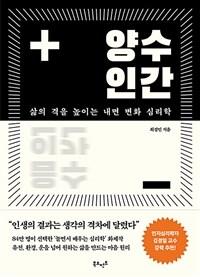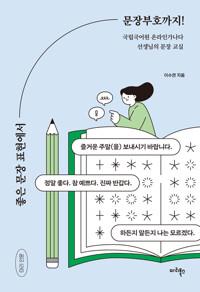책 이미지

책 정보
· 분류 : 국내도서 > 인문학 > 문화/문화이론 > 한국학/한국문화 > 근현대한국문화
· ISBN : 9788962970227
· 쪽수 : 302쪽
책 소개
목차
Chapter 1 Korea's Everyday Culture…Mihyun Kim
Ⅰ. Culinary Culture: Bibimbap, Kimchi, and Sujeo Culture
1. Bibimbap and the "Combination" culture
2. Kimchi and fermentation culture
3. Guk, gukmul, sujeo culture
Ⅱ. Housing Culture: Hanok and Ondol, the Republic of Apartments
1. The structure and elements of a hanok
2. Characteristics of hanok: maru and ondol
3. The aesthetics of hanok
4. Today's hanok
5. The Republic of Apartments
Ⅲ. Clothing Culture: The Tradition and Modern Characteristics
of Hanbok, the Name Brand and Jjaktung
1. Tradition of hanbok
2. Korea, the fashion power: Dongdaemun Fashion Valley
Ⅳ. The Internet Culture: Cyworld, Lineage and 'We'
1. The internet powerhouse
2. Dynamic Korea
3. Cyworld, a friendly world
4. Korea in the online game, Lineage
5. We-ism in Korea's internet culture
Chapter 2 The Characteristics of Modern Korean Family and the Status of Women…Inhee Hahm
Ⅰ. Where We Stand
Ⅱ. The Current Situation of the Korean Family
1. The process of getting married
2. Typical gender roles in a marriage
3. Sexual relations before and after marriage
4. Divorce and remarriage
5. The status of kinship
6. Preparation for aging
7. Korean family values
Ⅲ. The Change of Family Life Cycle: From Institutional Family to Companionate Family
Ⅳ. The Status of Women: A "Subtle Revolution"
1. The age of subtle gender discrimination
2. Social institutions and the status of women
Ⅴ. Future of Women: The 21st Century Calls for Women!
Chapter 3 Understanding Korean Religion…Joonsik Choi
Ⅰ. Opening Words
Ⅱ. Everlasting Religion for Koreans: Shamanism
1. History and traditions of Shamanism
2. Characteristics of Korean Shamanism
3. A modern implication of Korea's Shamanism
4. Closing words
Ⅲ. The Real Power in the Arena of Korea's Religions Christianity
1. Christianity in Korea and its numerous world-records: Catholicism
2. Christianity in Korea and its numerous world-records: Protestantism
3. Why are Koreans passionate about Christianity?
4. Closing words: The future of Christianity in Korea
Ⅳ. The Birth Place of Korea's Religious Culture: Buddhism
1. Buddhist tradition over 1,600 years
2. Korea's world-class Buddhist artifacts
3. Closing words
V. Teachings That Fixed the Characteristics of Koreans: Confucianism
1. A brief history of Korea's Confucianism
2. Two pillars of Confucianism: Xiao (filial piety) and Ti (seniority between the senior and the junior)
3. Korea benefitted from Confucianism
4. Traditional Confucian elements that remain today: Ancestor worship
5. Relics of Confucianism
6. Closing words
Ⅵ. Religions Created by Koreans: Of Newly Emerged Religions
1. The shared qualities in the teachings of newly emerged religions
2. Three axes of Korea's newly emerged religions: Cheondogyo, Jeungsangyo and Won Buddhism
Ⅶ. Closing Words
Chapter 4 Understanding Korea's 20th Century Popular Culture…Younghoon Kim
Ⅰ. Korea's Popular Culture during Japanese Colonial Period
1. The beginning of Korea's modernization and popular culture
2. Establishment of the mass media
3. Popular music during the Japanese colonial period
4. Sinpa and popular culture during Japanese colonial period
5. Era of Japanese colonial period seen through major movies
Ⅱ. Popular Culture Before and After the Liberation of Korean War (1950s)
1. Freedom and Chaos
2. Popular music of the liberation, the War and the division
3. Popular culture that fed on "America"
4. Rules of anti-communism and popular culture
5. The 1950s seen through major movies
Ⅲ. Economic Development and Popular Culture (1960s-1970s)
1. The Park Jung Hee regime and popular culture
2. Popular culture in State-led industrialization and censorship
3. Popular music of the 1960s and 70s
4. Renaissance of Korean Cinema
5. The 1960s and 70s seen through major movies
Ⅳ. The 5th and 6th Republic and Popular Culture (1980s-1990s)
1. Seoul Spring 1980 and Gwangju Democratization Movement
2. The 5th Republic policy on control over culture
3. Popular culture in the era of the Olympics and professional sports games
4. Teenagers as consumers
5. Campaign culture for the masses in the 1980s
6. The significance of the June Rebellion of 1987 in the history of popular culture
7. Korea in the 1980s revisited through major movies
Ⅴ. Popular Culture in the 1990s, The Democratization Era
1. The Civilian Government and opening of culture market
2. The emergence of the video generation and the new generation culture
3. Growth of Korean Cinema in the 1990s
4. The 1990s seen through major movies
Ⅵ. Korea's Popular Culture in The New Millennium
1. Globalization and popular culture
2. Sintoburi and popular culture
3. Popular culture in the era of globalization and a new group of consumers
4. How Hallyu began
5. Popular culture of the 2000s seen through major movies
Chapter 5 The Cultural History of Division: Over the Boundary toward Liberation…Kisung Lee
Ⅰ. Severance and Borders: The Background and Formation of Division
1. From liberation to division
2. War and the cultural history of division
Ⅱ. Tension and Search for Reconciliation: Cultural Policy of Division
1. Division and effort toward reunification
2. Culture of division
Ⅲ. Separation and Reunion: Social Aspects of Separation by War
1. Separation by war and reunion
2. Culture in separation
Ⅳ. Overcome Division, Overcome Boundary: Vision of Reunification
1. The outlook for finding reunification solutions
2. Culture of reunification
Index






























